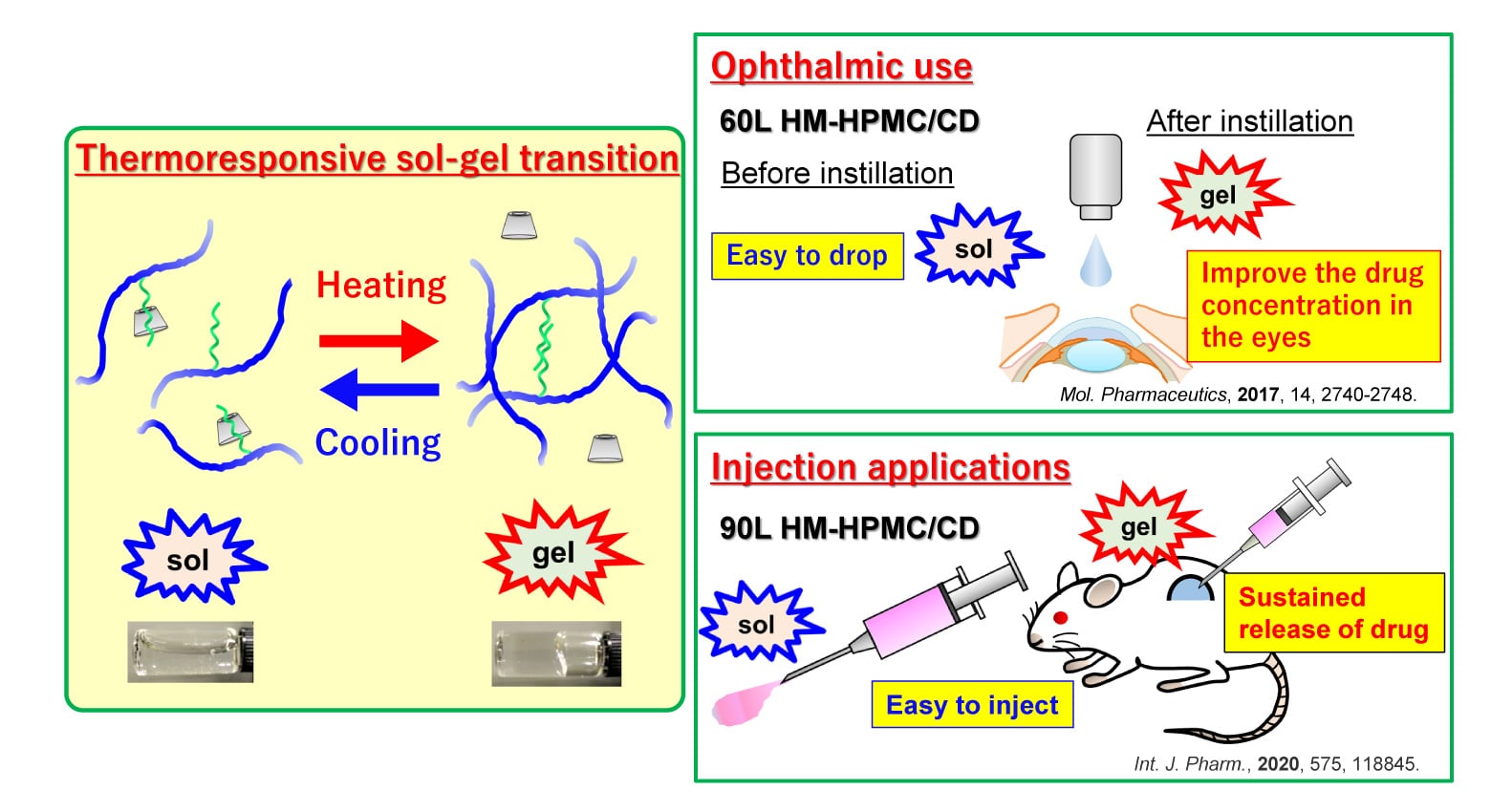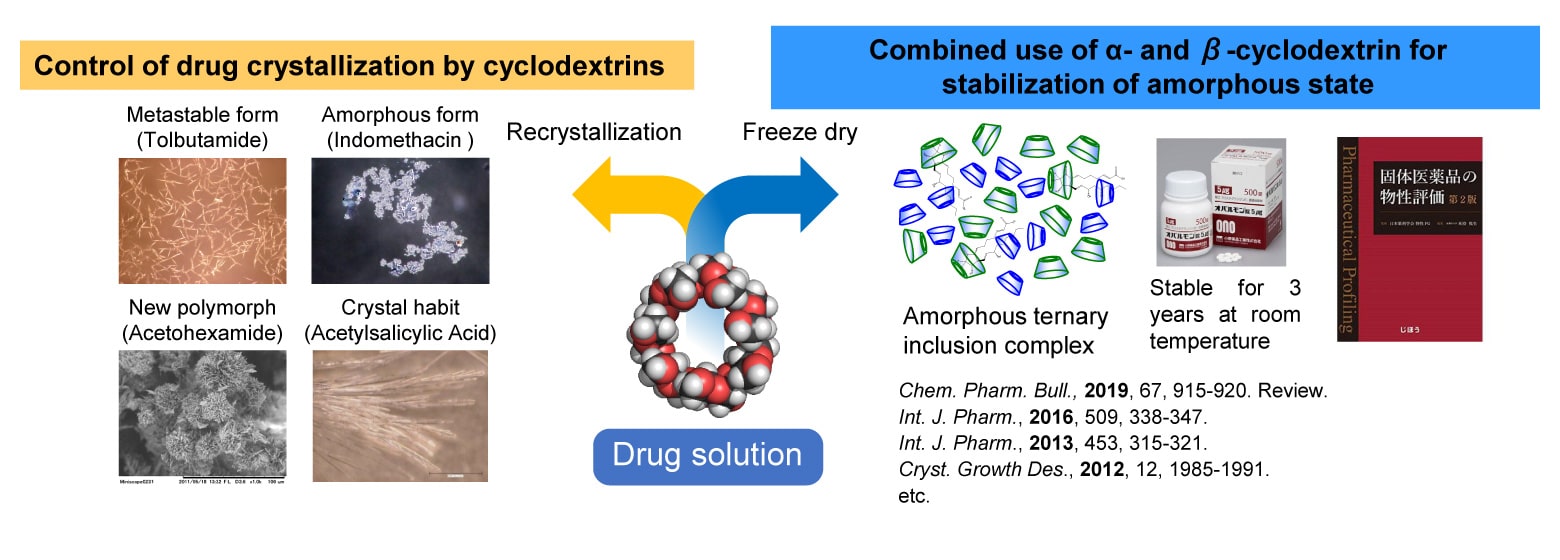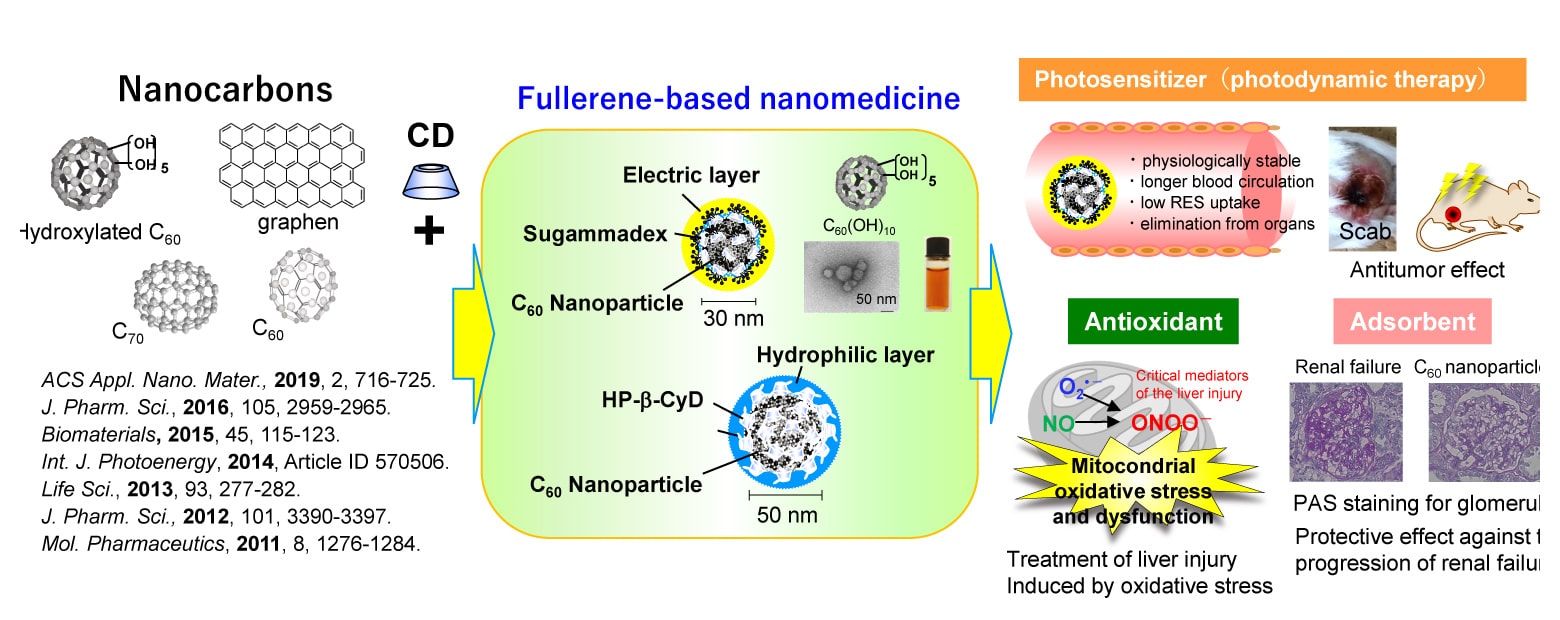Cyclodextrins in Pharmaceutical and Medical Innovation
Cyclodextrins (CDs), a group of cyclic oligosaccharides, possess unique supramolecular properties that enable them to form inclusion complexes by incorporating various drug molecules into their hydrophobic cavities. Our research leverages these properties to control and enhance the physical characteristics of pharmaceutical formulations and functional foods.
We are also exploring the potential of CDs in creating innovative drug delivery systems (DDS) by combining them with functional additives for medical applications. Our goal is to develop safe, user-friendly, and patient-centered formulations that meet diverse medical needs.
01Effective Use of Multifunctional Cyclodextrins in Pharmaceutical Formulation
Cyclodextrins (CDs) have gained significant attention as versatile functional materials, offering solutions to various pharmaceutical challenges. They are widely utilized for:
- Enhancing the solubility of poorly water-soluble drugs,
- Improving stability and controlled drug release,
- Boosting bioavailability,
- Reducing undesirable properties such as bitterness, bad odor, and local irritation.
The inclusion complexes formed by CDs generally increase drug solubility in water, reduce the diffusion rate of drug molecules by increasing molecular mass, and prevent drug aggregation by masking sites responsible for intermolecular interactions.
Research Focus
Leveraging the host-guest interactions inherent to CDs, our research explores their potential as additives to control drug crystallization in both solution and solid states. Highlights of our work include:
- Selective Crystallization: Utilizing CD-containing solutions to achieve selective crystallization of metastable forms or new polymorphs of drugs.
- Crystal Growth Modification: Inducing alterations in crystal growth by adding CDs to drug solutions.
- Stabilization Strategies: Developing approaches to stabilize amorphous states and supersaturated drug solutions by combining various types of CDs or pairing them with other additives.
02Development of Stimuli-Responsive Hydrogels for Drug Delivery

Hydrogels are composed of three dimensional networks of hydrophilic polymers in which the polymer chains are chemically or physically inter- or intramolecularly cross-linked. Physically linked hydrogels that can be prepared by inter- or intramolecular interaction such as hydrophobic or related interactions, hydrogen bonding and host–guest interactions, show sol-gel transitions in response to various external stimuli (pH, light, temperature and oxidizing/reducing agent, etc.). Hydrogels have been frequently used as drug or cell delivery vehicles.
We recently developed a new strategy for preparing the thermoresponsive materials based on interactions between CD and hydrophobically modified polymers. The hydrogels are typically form sols at room temperature that have a low viscosity, but form gels when they are warmed to body temperature. The thermal response of the HM-HPMC/CD material can be tuned by selecting an appropriate CD and the concentrations of the components. A thermoresponsive injectable hydrogel, in which interactions between the CD and hydrophobically modified polymers determine its properties, promises to be useful as an advanced drug carrier for drugs including proteins.
03Development of Carbon Nanoparticles for Medical Applications
Nanocarbons such as fullerene, carbon nanotube and graphene have attracted much attention for practical applications that take advantage of their unique structure, physical properties, and biological activities. For example, fullerene C
60 is well known to function as a photosensitizer or an antioxidant. When carbon nanotubes or graphene is excited by near-infrared irradiation, they rise to the temperature high enough to kill cancer cells, suggesting that these nanocarbons could be used as photothermal agents for cancer therapy. Furthermore, these nanocarbons are explored for use in areas such as gene or drug delivery, bioimaging and other fields. However, the practical use of these nanocarbons for medical applications have been hampered by the fact that they are only sparingly soluble in water.
We developed the hydrophilic C
60 nanoparticles, the surface of which were covered by CD, and evaluated their biological activities. C
60/CD nanoparticles were stable under physiological conditions and even in much harsher conditions. C
60 based nanoparticles represent a potentially promising material for use in the treatment of cancer and oxidative stress-related disease as well as having extensive biological applications.



